How to grow aubrieta from seeds, care for it, propagate it and protect it from diseases and pests.
| Content:
|
The best garden arrangement is harmonious. It consists in selecting plants for decorativeness, proportions, flowering times, as well as ease of caring for pets. In order to have the opportunity not only to work, but also to enjoy your vacation, it is worth planting several complex plants and most of the unpretentious “lifesavers” on your plot.
We will talk about one such representative today. It has two names - OBRIETA And AUBRETION. Our gardeners and summer residents love it very much and generously share their knowledge about how to plant aubrieta, grow it in different ways and how easy it is to care for it.
Beautiful aubrieta - time traveler
This perennial creeping plant very unpretentious, rather the opposite, it chooses poor rocky soils, lives in rock crevices, and develops steep river banks. The main condition for growing aubrieta is plenty of sun and a small amount of moisture. For this reason, aubrieta is popular among landscape designers, especially as an element in the design of alpine slides.
An adult aubretia bush can cover large areas with a dense green carpet. Twice a season, at the beginning of summer and from August until frost, the carpet becomes blooming. It is densely covered with many small flowers in white, reddish, pink and purple shades. Even in winter, the aubrieta does not lose its decorative effect. The same dense green carpet goes under the snow and safely waits out the cold.
Of course, our designers and gardeners could not ignore such an unassuming and hardy plant, and now aubrieta is confidently conquering Russian open spaces.
Reproduction and cultivation of aubrieta (aubretia)
In places of origin, aubrieta spreads by self-sowing. Like most perennials, it blooms in the second year and scatters seeds that can germinate in natural conditions. Gardeners are looking for the best way to grow aubrieta. Depending on the climate, soil composition and local conditions, any of the following options is possible:
- Growing aubrieta from seeds: sowing in open ground and through seedlings.
- Cuttings
- Dividing the bush
Cuttings, perhaps the easiest way. The best results are obtained if you do this at the end of summer. You need to cut off the branches without flowers, soak them in root solution and plant them in cups with drainage and loose soil. When it becomes clear that the plant is viable, be sure to plant it in a permanent place in the garden so that it can adapt and prepare for wintering. A distance of 15 cm between seedlings will be quite enough.
Can plant cuttings and directly into the ground, creating a small greenhouse under the covering material.
- But, firstly, you will have to pay more attention to them to ensure the necessary soil moisture.
- And secondly, not all cuttings will germinate, and voids will appear in the planting.
Transplanting such young plants from one place to another is risky.
One more point needs to be taken into account - over the years, the aubrieta bush ages, gaps appear in the clump, and decorativeness is lost, so it is better to take cuttings annually or at least every other year in order to have a constantly young and active plant.This is especially worth doing if you have a rare or valuable specimen.
Division bush is rarely practiced. Aubrieta has a hard time with this procedure. You can dig up and divide into parts a whole adult bush or cut off a piece from the curtain and transplant it to a new place.
Planting aubrieta seeds in open ground
The best time for sowing in open ground habitat is May and September. Aubrecia seeds germinate in two to three weeks, so you need to provide them with conditions for germination. First, you need to limit the planting site, separate it from other plants, since aubrieta is not capable of showing aggression and defending its place in the sun among its own kind. Weeds and neighboring plants easily suppress young shoots.
The sown seeds are lightly sprinkled with soil and then mulched with sand. If necessary, you can cover the sowing site with covering material to create a microclimate. It is best to leave seedlings of rare varieties in such a greenhouse until next spring, so they will certainly be preserved.
As the seedlings grow, they mulch a couple more times. It is better to use river sand and spread it in a layer of up to five cm. This type of care is liked by the obrieta and saves it from excess moisture and the dominance of weeds.
It is extremely rare for aubrieta to bloom in the first year; it is busy developing a powerful root system. But from next year it will begin to delight with its spring blooms and lush islands of greenery sticking out from under the first snow in the fall.
Growing aubrieta from seeds
In what soil is it better to grow aubrieta?. Oily, fertile, peaty soil is definitely not needed by shave; good drainage is more important for it. For growing seedlings You can use cups, but most gardeners prefer any container, bowl, etc.with holes in the bottom, where drainage and light, slightly alkaline or neutral soil are poured. Subsequently, the container is broken or a clod of earth with seedlings is carefully taken out and the entire plant is planted in the prepared place.
Sowing seeds. Aubrecia seeds are quite small, so when sowing in a container, you only need to lightly “salt” them with soil and press them down with a spoon for a tighter fit. This way sprouts will appear faster. Do not cover with film! Aubrieta is afraid of excess moisture. For watering, it is better to use a spray bottle.
Caring for seedlings. Caring for aubrieta seedlings is not particularly difficult:
- Moisten tiny sprouts in pots, tablets or containers with a spray bottle as the soil dries
- when they grow a little, apply moderate overhead watering
- plant in a permanent place when stable warm weather has established.
Planting aubrieta in the garden
Where to plant. For planting and growing aubrieta, a sunny place and poor soil with good drainage are best suited. It’s great if there is a rock garden, it will be very useful there. Stone steps or a crack in brickwork are everything to her. The only thing is that if there are neighboring plants, the aubrieta seedlings need to be fenced off and provided with their own space, otherwise it will show compliance and become so crowded that it will disappear completely.
Timing for planting aubriet. In areas with a humid and cool climate, planting aubretia in May with both seeds and seedlings is suitable. But where the hot summer months begin after May, young plants are unlikely to like the scorching sun, and gardeners will have to deal with the extra hassle of watering. In this climate, it is better to plant aubrieta in September.Any planting method can be used; during the long autumn the plant will have time to sprout and take root, and will bloom next spring, as it should.
How to care for aubrieta in the garden
In the garden, caring for young aubrieta involves watering as needed. We remember! The plant does not like excess moisture.
- First fertilizing is needed in the spring, after emerging from under the snow, and the next one - after the first flowering and pruning. You can also feed in the fall. For fertilizing, complex mineral fertilizer is used. No organic matter and high nitrogen content!
- Mulching with river sand is necessary two to three times a season. This helps to ensure the desired soil structure and keep weeds out.
- After the first flowering, the aubrieta branches need to be cut off by more than half. This stimulates the emergence of new shoots, the growth of the bush and extraordinary decorativeness in the next flowering. In the fall, there is no need to do pruning, but in the spring, remove branches damaged during the winter and trim the shape of the bush.
Diseases and pests of aubrieta
Diseases
Gardeners who once planted aubrieta try not to part with it for many years. And it’s not just about its decorativeness or the ease of caring for it. Among other things, aubretia is rarely affected by pests and has excellent disease resistance.
In places with a humid climate or with improper care (excessive watering), powdery mildew may appear. Then the shoots of the aubrieta become covered with a white coating, and this is the first signal for the use of antifungal drugs: Hom, Topaz, Zato, Fundazol, Forecast, etc. Most gardeners use colloidal sulfur and have good results.
Pests
Among insect pests, aubrieta has one enemy - the ubiquitous aphid.It is quite easy to detect and use drugs of your choice: Tantrek, Biotlin, Kalash, Iskra double effect, Cortlis, Mospilan, Imidor and others. It is important to follow the instructions and repeat treatments to avoid new insects emerging from the larvae.
The use of a solution of green soap, both separately and in a mixture with the selected drug, has a good effect. Soap forms an airtight film, envelops the affected plant along with aphids and larvae, thus preventing insects from breathing, and they die. And if an insecticide is also present in the working solution, then a double effect is obtained. With a film of green soap, the preparation is securely fixed to the branches of plants, is not washed off by rain and is not destroyed by the sun.
Options for using aubrieta in landscaping
- This wonderful flower fits everywhere. Its traditional use is on alpine slides, but how beautiful the aubrieta looks next to ornamental shrub!
- Its white varieties open in early spring. They can successfully replace fading crocuses and snowdrops and serve as a frame for a flower bed with tulips.
- It is beneficial to combine aubrieta with other groundcovers, since many of these representatives bloom only once a season, but our favorite blooms profusely twice and stands out as a bright spot against the background of its neighbors.
- Aubrieta can cascade down the steps or, conversely, climb up the stonework, serve as a border and “flow out of a clay pot... This plant provides not only space for fantasies, but also the opportunity to realize these fantasies.
The most famous varieties of aubrieta (aubretia)
Absolutely all varieties of aubrieta are delicious and differ little from each other in terms of growing conditions and care needs.
However, some of them are short, up to a maximum of 10 - 12 cm in height, for example, Kolumka, Ariadna. Others are so tall that their shoots are used for cutting (Bougainville and Raspberry Sea aubriet - more than 20 cm).
Individual plants form beautiful clumps (Charming Morocco, Kittie Blue), and the Giant Falls and Cascade varieties are able to fall in waves from hills and retaining walls.
The shade, shape and size of flowers are also for every taste and need:
Pink and soft purple flowers Guss Columcas are large, 4.5 cm in diameter,
Charming Morocco - up to 1 cm, has both blue and red shades.
Varieties Doctor Mules and Joy are dark purple, but representatives of Joy have double petals.
Aubrieta deltoid produces inflorescences resembling lilacs.
Red Cascade surprises with its unusual bright scarlet color...
Even in the period between flowering, the aubrieta is unusually decorative: the rich greenery of Red Cascade goes well with the pale green specimens of Doctor Mules and the grayish shoots of the Cascade aubrieta, and together with other inhabitants of the garden they create a luxurious pattern and a festive atmosphere.
Anyone, even a novice gardener, can collect their own collection of varieties of this beautiful plant, because aubrieta is easy to grow, hassle-free care and is harmonious in combination with a wide variety of neighbors.
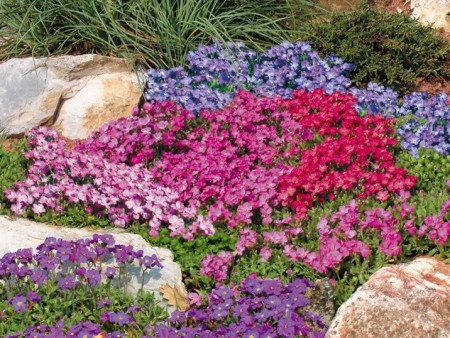
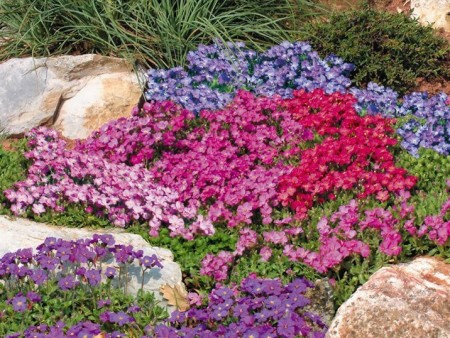
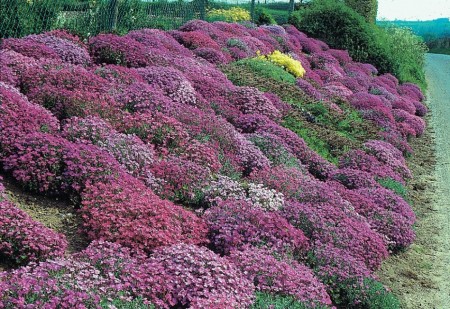
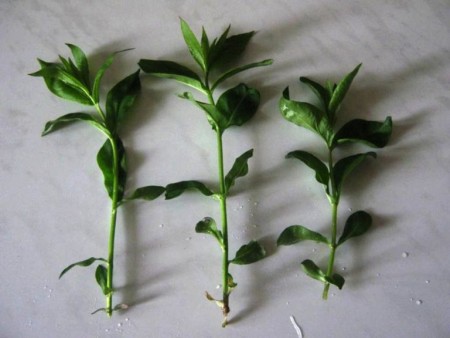

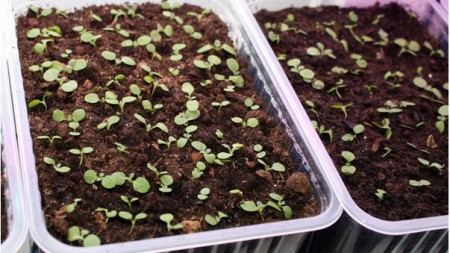
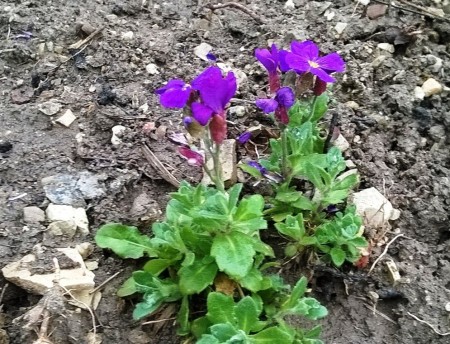
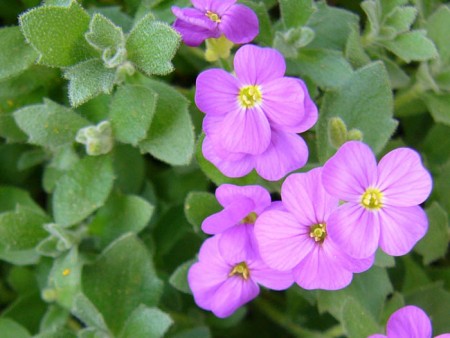


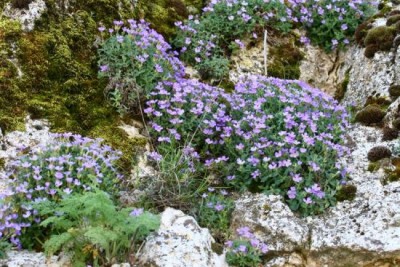
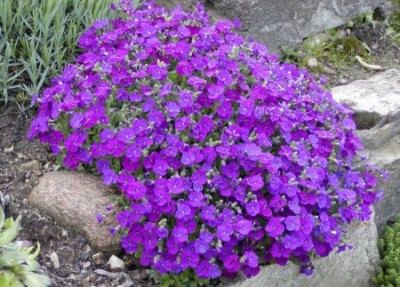
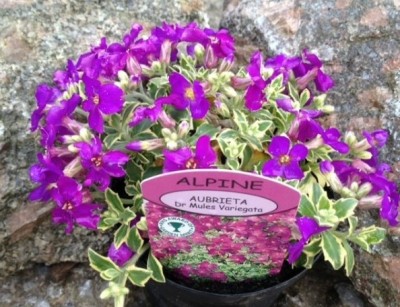
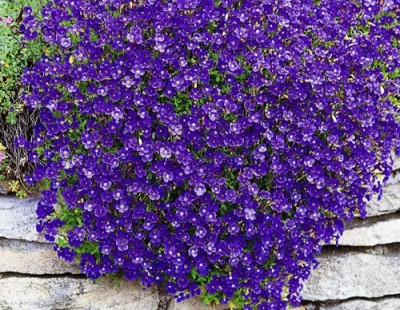
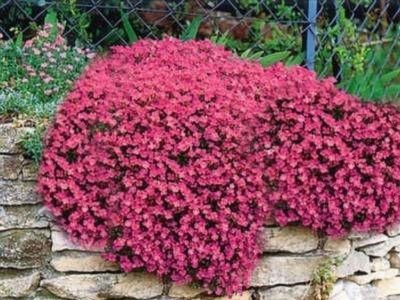

 CUCUMBERS NEVER GET SICK, I'VE BEEN USING ONLY THIS FOR 40 YEARS! I SHARE A SECRET WITH YOU, CUCUMBERS ARE LIKE THE PICTURE!
CUCUMBERS NEVER GET SICK, I'VE BEEN USING ONLY THIS FOR 40 YEARS! I SHARE A SECRET WITH YOU, CUCUMBERS ARE LIKE THE PICTURE! You can dig a bucket of potatoes from each bush. Do you think these are fairy tales? Watch the video
You can dig a bucket of potatoes from each bush. Do you think these are fairy tales? Watch the video
 How our fellow gardeners work in Korea. There is a lot to learn and just fun to watch.
How our fellow gardeners work in Korea. There is a lot to learn and just fun to watch. Eye trainer. The author claims that with daily viewing, vision is restored. They don't charge money for views.
Eye trainer. The author claims that with daily viewing, vision is restored. They don't charge money for views. A 3-ingredient cake recipe in 30 minutes is better than Napoleon. Simple and very tasty.
A 3-ingredient cake recipe in 30 minutes is better than Napoleon. Simple and very tasty. Therapeutic exercises for cervical osteochondrosis. A complete set of exercises.
Therapeutic exercises for cervical osteochondrosis. A complete set of exercises. Which indoor plants match your zodiac sign?
Which indoor plants match your zodiac sign? What about them? Excursion to German dachas.
What about them? Excursion to German dachas.